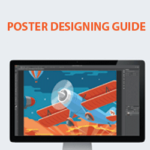Digital MarketingGraphic Design
What is Photoshop Editing?
Photoshop Editing is a amazing sights are all around us in our daily lives. Visual design experiments quickly become popular graphic designing services trends, and we see them all over the place. Bus sides, posters, billboards, TV commercials, periodicals, and, of course, internet items are all covered with eye-catching visual designs.
Due tone, double exposure, scan lines, glitch, smudge, color channel, picture masking, vibrant-garish hues, and misprint are some of the terms used to describe them. Using graphic design trends could prove to be a crucial option, as it can assist a designer to become more current.
Daring to be different has its benefits as well. Photoshop designing is to manipulate (a digital image) with Photoshop or other image-editing software in a way that defies reason (as for deliberately deceptive purposes). Photoshop is used for a variety of reasons.
However, the most typical stumbling block is determining where to begin. With so many photoshop editing tools at your disposal, how do you know which ones to be using and in what sequence? It’s all too easy to get overwhelmed. Many images of models are altered to erase flaws or improve the model’s appearance. Fixing mistakes is another reason to alter a photo.
People had to modify photographs by hand before computers were invented. Pasting photographs together was used for some of the editing. Ink, paint, and airbrushes were also used by the people.
Enlargers increased the size of photographs and enabled modifications such as lightening or darkening specific areas. In 1987, Adobe Photoshop was released for the first time.
The first photo editing smartphone apps appeared on the App Store in 2011. Apps for different mobile operating systems have also been created. These apps allow you to edit and share photos from your smartphone or tablet PC.
Even modest editing apps should be able to replicate basic Photoshop designing approaches, and each can improve your images to make them more powerful and shareable. Here are some tips for Photoshop Designing;
Autocorrect: You’ll very certainly have the option of auto-correcting the image, regardless of which Photoshop editing program you use. Auto correcting is essentially the program’s insightful comment to the photo’s man-made flaws.
Straighten images: It’s always ideal to pay attention when shooting to make sure your horizon is horizontal, however straightening is a simple first editing step.
Rotate the view rather than the image. You can retouch the image from a different viewpoint, but you don’t have to rotate the image.
Edit many text layers at the same time. If you’re making identical changes to all of the text layers, you don’t have to modify them individually.
Changing the exposure: This is the process of creating the shot as light or gloomy as you want it to be.
Fill Light is an editing function that simulates the usage of a supplementary lighting source to enhance shadow areas or darker areas.
In photoshop, highlights are employed in the brightest parts.
If you’re unfamiliar with the term, saturation refers to how vivid the colors are. Higher tones of the color spectrum are added when the saturation is increased, making the colors look more vibrant.
Images that are spot-free: The outdoors is a dusty area, and nature’s grit finds its way onto your camera lens, and then into your shots.
White Balance should be adjusted. The term “white balance” refers to color levels rather than exposure levels. White balance is a camera setting that detects the chromaticity of the light you’re photographing in and compares it to neutral white.
A perfect white balance should display white as it appears in reality, with no color casts distorting the brightness of white. You can modify white balance to correct an image’s overall color tone if you find it unappealing or unnatural.
Employ a photo histogram: a photo histogram is a graphic depiction of a photo’s tonal range that may be used to assist you in fine-tune final exposure settings during editing.
When there is a lot of dark areas or a lot of light area in a shot, it can be useful. Many Photoshop designing applications include it on the screen where you control exposure, so it’s easy to find.
A properly exposed photograph will have tones ranging from dark to light, with more tones grouped in the middle.
Sharpness can be tweaked. Sharpening an image gives it a cleaner, brighter appearance. Multiple sharpening tools are available in many programs.
Adjust Colour Vibrancy. After you’ve set the white balance, use the saturation and vibrancy sliders to fine-tune the colors in your images. Increased vibrancy enhances color intensity in neutral color tones while maintaining color intensity in brighter hues.
A smart crop takes into account the photograph’s original straight lines. The lines from the grid should match the clean lines in your shot. Most Photoshop editing applications will overlay a grid over the image you’re cropping.
Here are some of the best Photoshop designing Applications;
Snapseed, which is owned by Google, features a lot of exposure and color capabilities, as well as a lot of filter options, ranging from vintage to modern, punchy HDR appearances.
For industry professionals, Adobe Light room is still the industry standard, and the mobile version is similar.
Many of the same capabilities as Light room, such as exposure, contrast, and color altering options, are available in Photoshop Express, but it lacks some advanced tools, cloud syncing, and, most importantly, a monthly charge.
Prisma isn’t capable of applying delicate filters or performing simple picture repairs. Instead, its psychedelic effects will turn your photos into strange artistic creations.
The patchwork and collage tools in Bazaart allow you to layer several materials, such as images, text, and graphics, to produce a final work of art.
Conclusion
Photoshop editing abilities might make you a desirable candidate in a variety of sectors. Desktop publishers design and modify visuals for books, periodicals, greeting cards, and other sorts of publications using software such as Photoshop.
When website designing, web developers frequently utilize Photoshop to build mock layouts or design visuals for the sites, such as banners and logos.
Photoshop editing is possible not only for personal photography but also for large projects such as fashion covers in blogs and newspapers, as well as for fashion e-commerce sites. When picture editing of such portraits is completed, you can be sure that sales will skyrocket.
Photoshop editing is particularly valuable for real estate services or investment companies, where you may improve the visual appeal of homes by upgrading photographs used in photo business directories on various websites.
This might help you attract the correct clientele and sell your home faster. Multimedia artists make visuals for video games, film, and other types of media using Photoshop and other computer applications.
A technique to communicate your story or convey what you were intending to capture when you shot the photo is through Photoshop editing.
But often the image captured by the camera does not correctly depict the moment. Photo editing might give you another chance to capture the image the way you wanted it to be captured in the first place. Is Photoshop editing, however, truly necessary?
After pushing the shutter button, the method of developing a picture does not conclude. You’ll always feel compelled to make minor adjustments to the images in order to make them seem the way you want or need them to. You’ll also need to do this in order to align your shot with the reason you took it in the first place.
Non-destructive Photoshop designing is when the software automatically preserves your originals. Others use destructive editing to store altered photographs over originals. When it comes to editing, you need to be able to go back to an original file if you make a mistake.
As a result, check to see if your editing program duplicates your originals. If it doesn’t, create a copy of all the photographs you want to work on before you start.
The purpose of Photoshop editing is to bring out the best in a composition while still embracing the photographer’s aesthetic. Finally, the editing process enables photographers to personalize a situation that they have experienced.




